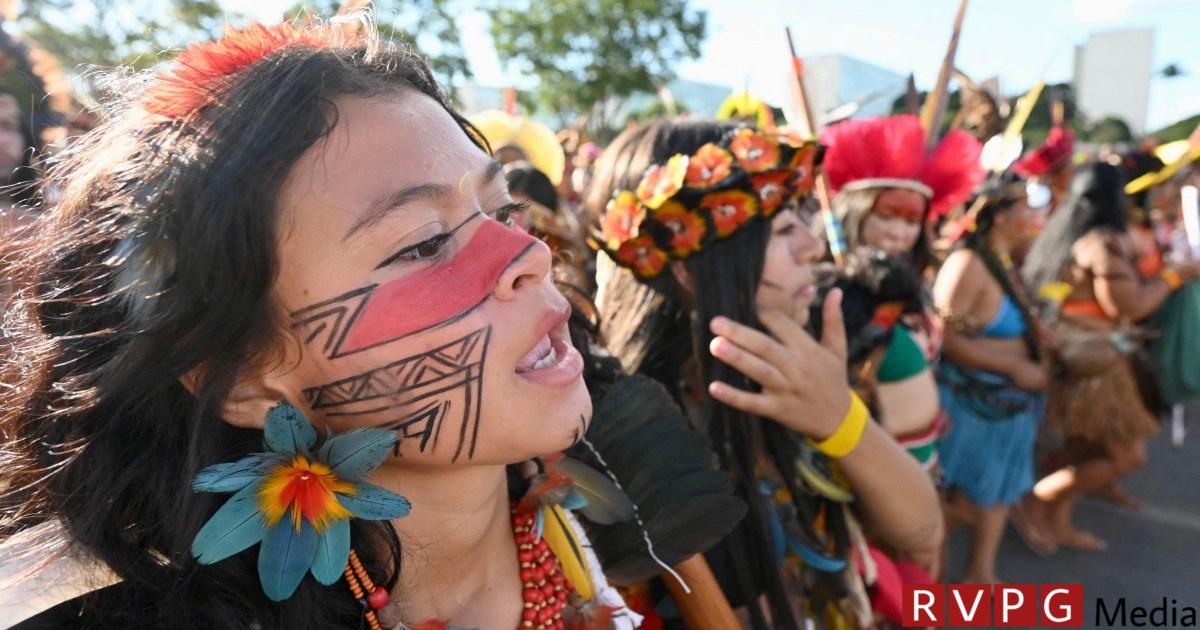Thousands of indigenous people marched in the Brazilian capital, demanding the government officially recognize the land they have lived on for centuries and protect areas from criminal activity such as illegal mining.
Carrying placards with messages such as “The future is indigenous,” they went on Thursday to the Three Powers Square, where the Congress, the Supreme Court and the Planalto presidential palace are located in Brasilia.
A group of indigenous leaders entered the palace to speak with President Luiz Inacio Lula da Silva, while others outside the building chanted: “Our rights are non-negotiable.” Last week he rejected the creation of four indigenous territories, citing resistance of the state governors.
In addition to calls for more land recognition, some tribes protested against a planned 950 km (590 mi) railway project to transport soybeans from Mato Grosso state in the central part of the country to ports along the Tapajos River, a major tributary of the Amazon.
Indigenous leaders from the Kayapo, Panara and Munduruku tribes said they had not been adequately consulted and feared the new infrastructure would lead to increased deforestation.
Thursday’s rally marked the culmination of the annual Free Land Indigenous Camp, now in its 20th year. Unlike the previous two years, the president was not invited to visit the camp set up on Brasilia’s main promenade.
“There is political instability, disrespect and mistrust,” Marivelton Bare, head of the Rio Negro Federation of Indigenous Organizations, told The Associated Press during the march.
“We expected a lot from the government but they are doing very little. We knew Congress would be hostile, but not as hostile as before. And in Congress, the administration is using indigenous and environmental issues as a bargaining chip,” added Bare, whose organization represents 24 indigenous tribes from the northwestern part of the Brazilian Amazon.
Lula, who was previously president between 2003 and 2010, began his third term in office last January. Since then, his government has created 10 indigenous territories, which leaders say is not enough. According to the nonprofit Socio-Environmental Institute, recognition applications are pending with the federal government in at least 251 areas.
Indigenous areas make up about 13 percent of Brazil’s territory. Most of these areas are in the Amazon rainforest.
Even at a slow pace, Lula’s border drawings represent a stark contrast to those of his predecessor, Jair Bolsonaro, who kept his promise not to create a single inch of additional indigenous land. However, indigenous demands are facing increasing resistance from the powerful agricultural industry, which is supported by hundreds of members of Congress and several governors across the country.
